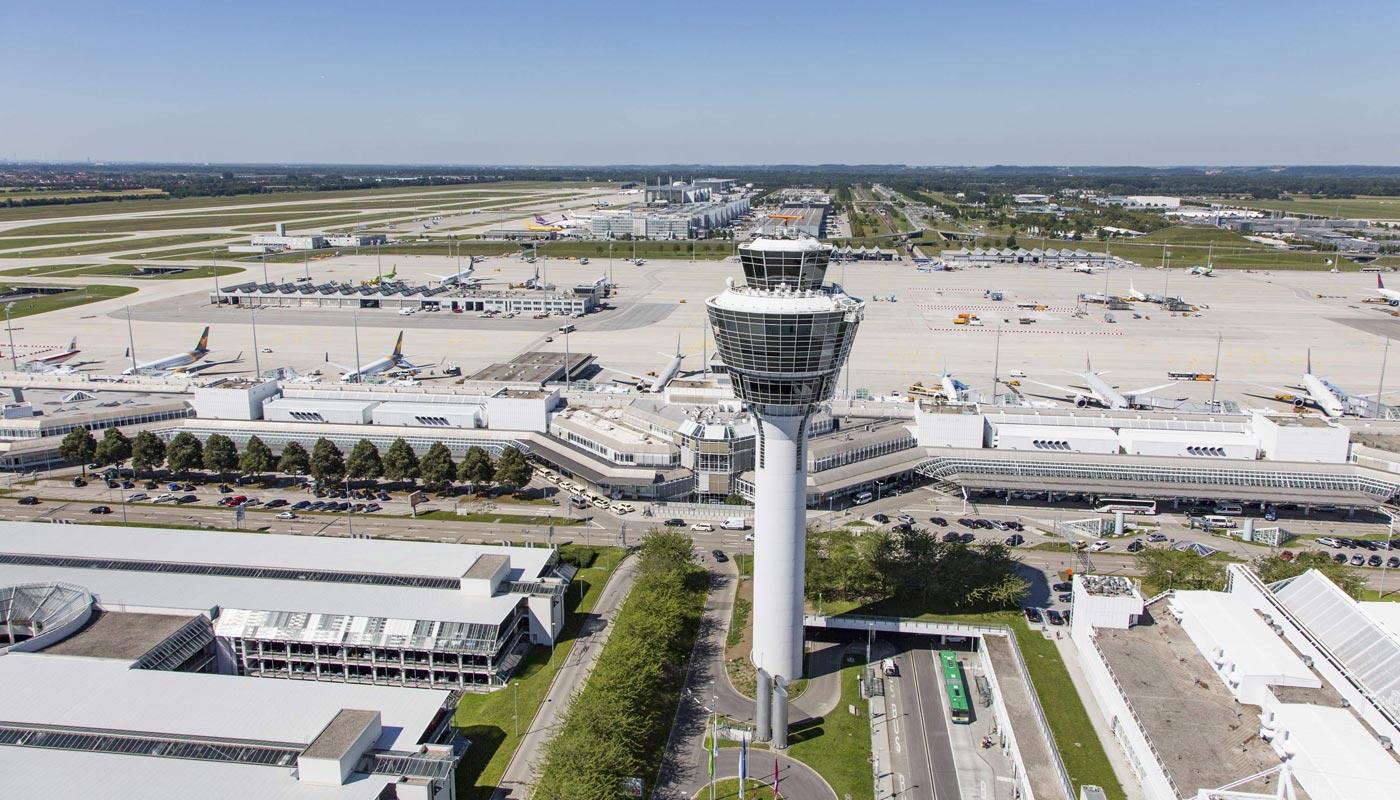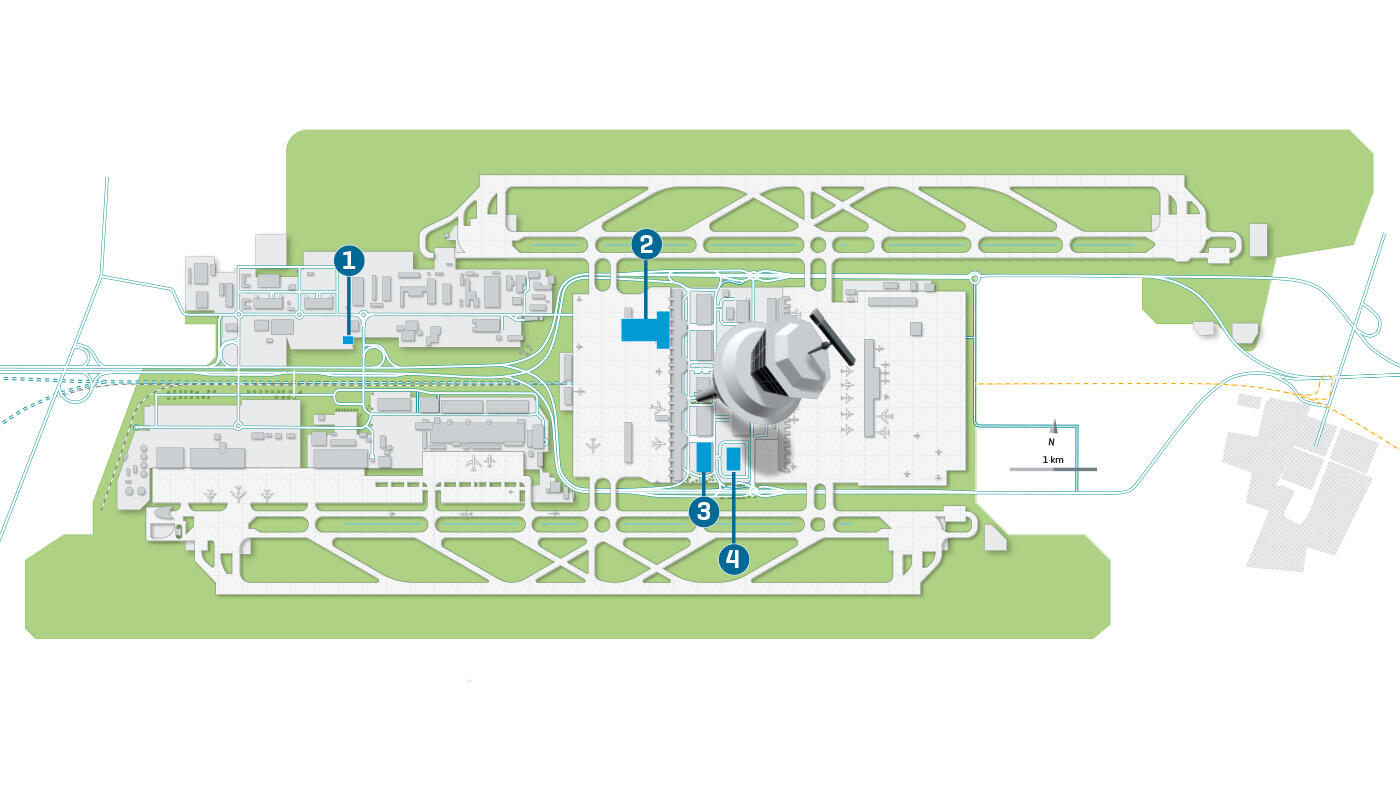Munich Airport celebrated a milestone in 2017, after relocating from Riem to the Erdinger Moos area 25 years ago. It is now a hub with worldwide destinations and an important factor in the lives of local people and companies.
Location & Expansion
Infrastructure at Munich Airport
Excellent infrastructure data for flight operations permit short turnaround times for airlines and maximum comfort for passengers.
Terminal 1
- length: 1,081 m
- area: 198,000 m²
- baggage transportation system: 18 km total length
Terminal 2
- length: 980 m
- area: 125,800 m²
- baggage transportation system: 46 km total length
Terminal 2 satellite
- length: 609 m
- area: 125,000 m²
Project "Third Runway"
The planning approval decision for the construction of a third runway was issued by the General Administration of the Free State of Bavaria on July 5, 2011. With this decision, the approval authority confirmed the planning application for the third runway including the sub-projects after intensive examination and consideration of all aspects of the expansion project.
In July 2015, the Federal Administrative Court in Leipzig dismissed the last appeals against the project and finally ruled that Munich Airport's plans fulfill all technical and legal requirements. The building permit is thus legally binding and valid.
In its 2023 coalition agreement, the governing coalition of CSU and FREIE WÄHLER in Bavaria agreed to a moratorium on the construction of the third runway until the end of the current legislative period.












